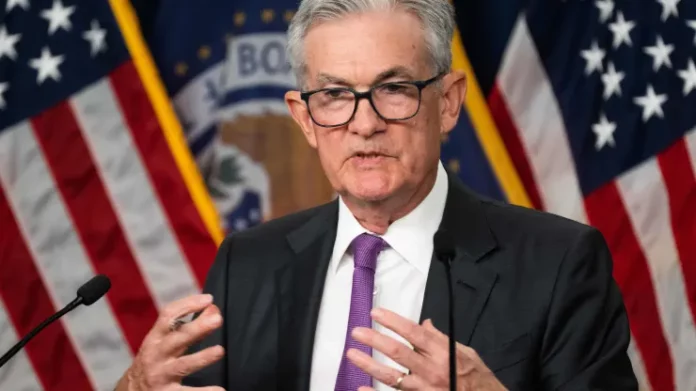The recent violent shifts in the bond market have left investors concerned about a potential recession and raised questions about the stability of housing, banks, and the U.S. government’s fiscal health. At the heart of this turmoil is the 10-year Treasury yield, a pivotal figure in the world of finance. The 10-year yield, which reflects the borrowing costs for bond issuers, has been steadily climbing in recent weeks, reaching 4.8% on Tuesday. This level hasn’t been seen since just before the 2008 financial crisis.
The unanticipated rise in borrowing costs has exceeded analysts’ forecasts, prompting Wall Street to search for explanations. While the Federal Reserve has been increasing its benchmark interest rate for the past 18 months, this move hadn’t significantly affected longer-dated Treasurys like the 10-year. Investors had believed that rate cuts were imminent.
However, the situation began changing in July when signs of economic strength contradicted expectations of a slowdown. The pace accelerated in recent weeks as Fed officials remained resolute in their stance on keeping interest rates elevated. Some on Wall Street speculate that part of this surge is technically driven, possibly triggered by selling from a country or large institutions. Others are concerned about the escalating U.S. deficit and political dysfunction. There’s also a belief that the Fed intentionally engineered this surge in yields to cool down an overheating U.S. economy.
Bob Michele, the global head of fixed income for JPMorgan Chase’s asset management division, stated in a Zoom interview, “The bond market is telling us that this higher cost of funding is going to be with us for a while. It’s going to stay there because that’s where the Fed wants it. The Fed is slowing you, the consumer, down.”
The ‘everything’ rate The 10-year Treasury yield holds a central position in global finance. While shorter-duration Treasurys are directly influenced by Fed policy, the 10-year reflects market sentiment and anticipations regarding economic growth and inflation. It’s the rate that has the most significant impact on consumers, corporations, and governments, affecting trillions of dollars in home and auto loans, corporate and municipal bonds, commercial paper, and currency exchange rates.
The recent fluctuations in this yield have left the stock market teetering on the edge, as expected correlations between asset classes have broken down. Stocks have been declining since yields began rising in July, erasing much of the year’s gains. Surprisingly, the traditional safe haven of U.S. Treasurys has performed even worse. Longer-dated bonds have seen a 46% decline since their peak in March 2020, a significant drop for an asset class typically considered one of the safest investments.
Benjamin Dunn, a former hedge fund chief risk officer now running consultancy Alpha Theory Advisors, remarked on the perplexing situation, saying, “You have equities falling like it’s a recession, rates climbing like growth has no bounds, gold selling off like inflation is dead. None of it makes sense.”
Squeezed Borrowers However, the impact on most Americans is yet to fully materialize, particularly if rates continue to rise. The surge in long-term yields is aiding the Fed in its battle against inflation. By tightening financial conditions and driving down asset prices, it is expected that demand will decrease as more Americans curtail spending or face job losses. Credit card borrowing has increased as consumers dip into their savings, leading to the highest delinquency rates since the onset of the COVID-19 pandemic.
Lindsay Rosner, the head of multi-sector investing at Goldman Sachs Asset and Wealth Management, observed, “People have to borrow at a much higher rate than they would have a month ago, two months ago, six months ago. Unfortunately, I do think there has to be some pain for the average American now.”







